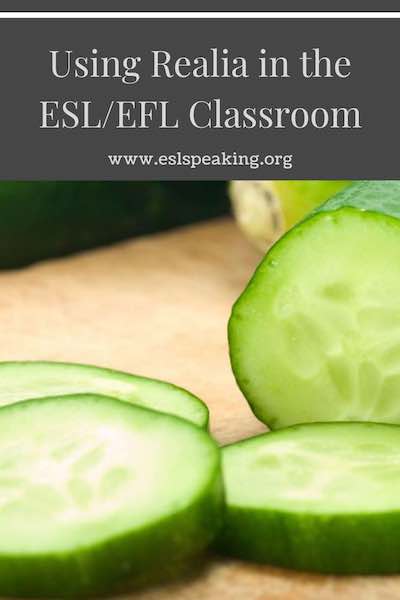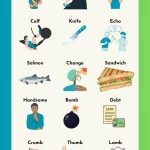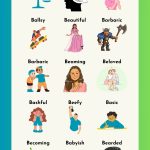If you’re looking for details about using realia in the classroom, look no further! Keep on reading for examples, advice and more, along with the key differences between realia and specimens.

What is realia?
What is Relia?
Realia refers to any object brought into the classroom to bring a lesson, idea, or concept to life. For example, you could talk about various fruits and vegetables and show pictures of them or you could bring real objects into class. Students can touch, taste or smell them, which will make the lesson quite memorable.
The other situation in which you might consider using realia is for functional language. For example, how to read a bus schedule or order food at a restaurant. Why not bring an actual schedule or menu into the classroom and use that? These examples of realia that are used for communication purposes are known as authentic materials.
Realia can also be something in the virtual world (for teaching online perhaps). The key is that it’s something not created specifically for English learners.
What are 5 Examples of Realia?
Here are some common ways in which TEFL teachers use realia in their English-learning classrooms.
#1: Restaurant Menus
Why not use a real menu to give students some practice and confidence in ordering food? It’s a fun lesson since everyone loves talking about food!
#2: Basic Vocabulary
For things like fruits and vegetables, sports, classroom objects, etc., it’s easy enough to bring real objects into the class so that students can use them, touch them, taste them, etc.
#3: Tourism and Travel Brochures
I love to pick up some travel brochures and use them for this brochure scanning activity. It’s a fun way to learn a bunch of travel and tourism vocabulary.
#4: Recycle This
This is a simple activity to introduce a lot of interesting vocabulary, along with environmental concepts. Bring in a recycling box filled with various things—paper, glass, metal, etc. Then, have students tell you which category each thing belongs to, along with the name of the object.
#5: Survivor
Bring in a bunch of useful objects for island survival such as glasses, a lighter, dental floss, swimming goggles, etc. Students have to name all the objects, and then in groups, decide which three items they’d take it they were stranded on an island and why.

How to use realia in the language learning classroom
Why Use Realia?
There are a number of reasons why you might consider using realia in the classroom. Here are some of the most important ones.
#1: Makes Learning Memorable
You can talk about a banana and show a picture of it, but why not show the real object? This will make the lesson more memorable and students will probably never forget that word!
#2: Ideal for Teaching Functional Language
Functional language is how things get done! You use functional English to order food at a restaurant, fill out an immigration form, or read a train schedule. Bringing realia into the classroom can help increase student confidence that they can get these things done in real life, outside the classroom.
#3: Realia Appeals to Visual and Kinesthetic Learners
Some people like to look at and touch things. Realia appeals to these learners who may find learning strictly from books not that interesting.
#4: It’s a Nice Change of Pace
If you’re mostly using a textbook to teach from, realia can be something different. I know that when I bring objects into the classroom, students are always so curious about what they are and it’s easy to generate interest in the lesson.
#5: They Can Increase Confidence
For learners who want to use English in the workplace or when travelling, use real materials! They can increase confidence in a big way. For example, with a real immigration form or restaurant menu.
Is Realia Authentic Language Materials?
Realia and authentic materials are very similar in that they are used in real life, not just in the ESL/EFL classroom. However, authentic materials are used for communication purposes (newspapers, restaurant menus, etc.), while realia are actual objects that you can find in stores or homes.
Tips for Using Realia
When using realia in the classroom, there are a few things to keep in mind.
#1: Prepare Ahead of Time
To use realia, you have to be organized! You may have to buy objects (fruits/veggies) or bring things from home (baseball, tennis racket, etc.). Do this well before the lesson in case you forget!
#2: How Many Students?
If you have very large classes of young learners, it may not be that practical. All the kids will want to touch whatever you bring and this can take a very long time with a big class.
#3: Think about Logistics
Don’t bring anything that you’re worried about getting broken! Other logistics depend on the object. If food, be sure you have a way to cut it up and share it. Allergies can be a concern too.
#4: Worth the Hassle?
Sometimes realia isn’t worth the hassle so don’t always default to bringing them into the classroom. I generally reserve them for special situations and certain units.

Differences between specimens and realia
Differences Between Realia and Specimens
There are a few key differences between realia and specimens.
- Realia are everyday objects from real life. Specimens are something that represents a class or object.
- Realia are used in regular classrooms. Specimens are usually for diagnostic purposes in places like universities or medical labs.
- People have access to all kinds of realia. However, specimens are more difficult for the average person to get a hold of.
Using Realia in the Classroom: Join the Conversation
Do you have any tips, tricks, or ideas for using real in a language learning classroom? Leave a comment below and let us know what you think. We’d love to hear from you.





Leave a Reply